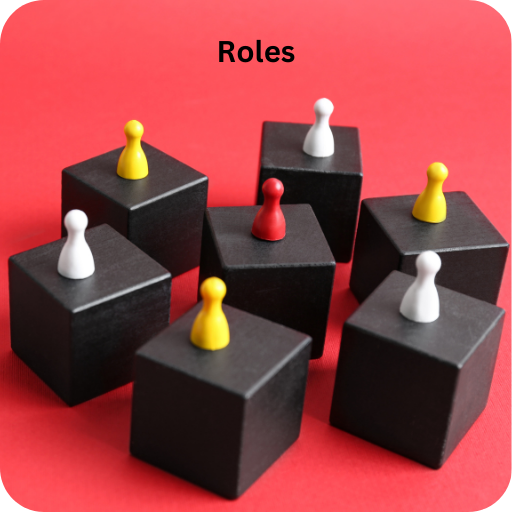Introduction
Building a West Coast Swing (WCS) community is all about connection, timing, and finding a strong core team. At the heart of any thriving WCS community is a strong leadership team. These people plan the events, teach the classes, curate the music, and ensure everything runs smoothly behind the scenes. Without them, the community will struggle to find its footing, let alone grow.

A well-rounded leadership team does more than keep things organized. They set the tone for the entire community, creating an environment where people feel welcome, excited to learn, and eager to return. Whether you’re just starting a new WCS community or looking to strengthen an existing one, finding the right core team is crucial.
This article will walk you through the essential roles you’ll need to fill, the challenges you might face, and how to build a team ready to take your WCS community to the next level.
So, if you’re ready to build a team to help your WCS community thrive, let’s get to it.
Understanding the Core Roles

Step one is determining who you need on your leadership team. Think of these roles as the pillars supporting everything you do, from organizing events to ensuring everyone has a great time on and off the dance floor.
Here’s a breakdown of the key roles you’ll want to fill and why each is essential. While these roles are written as singular, most clubs will wish to have multiple people to fill some of these roles, and other roles may be required depending on your organization’s needs. This list is a starting point.
As you begin this process, some people may fill multiple roles, and multiple people could be in each role. It depends on your community, its needs, and the skills available.
Community Organizer
This person is the visionary, the planner, and often the face of the community. They’re responsible for setting goals, coordinating with the rest of the team, and making sure everyone is on the same page. Whether deciding on the next big event or how to attract more dancers, the Community Organizer is the one steering the ship.
Instructor
Your Instructor/s will direct and drive the community’s dance education. They’re the ones who will be teaching your dancers, helping them improve, and making sure that everyone, from beginners to seasoned pros, feels challenged and inspired. A great Instructor doesn’t just teach steps—they build confidence, encourage creativity, and foster a love for the dance that keeps people coming back.
DJ
Every great WCS event has one thing in common: great music. That’s where the DJ comes in. This person is responsible for creating the playlist that keeps everyone moving. They need to understand WCS music deeply, know how to read the room, and mix things up to keep their energy high. The DJ sets the vibe, so this role is crucial for ensuring your events are as fun and engaging as possible.
Event Coordinator
The Event Coordinator is your logistics guru. They handle all the nitty-gritty details that make events run smoothly—from booking venues and scheduling classes to managing registrations and coordinating with vendors. They’re the ones who make sure that when people show up to your event, everything is in place, and the experience is seamless. Even the best-planned events can quickly fall apart without a strong Event Coordinator.
Marketing & Communications Lead
To grow your community, you need to get the word out. The Marketing & Communications Lead is the voice of your community, managing everything from social media accounts to newsletters and local outreach. This person needs to be savvy with online tools, have a knack for creating engaging content, and understand how to attract new members while keeping your current dancers in the loop.
Financial Manager/ Treasurer
Finally, the Financial Manager monitors the budget and ensures your community stays financially sustainable. This person is responsible for tracking income and expenses, setting fees for classes and events, and managing fundraising efforts. A good Financial Manager ensures your community can continue growing without financial trouble.
By filling these core roles with the right people, you’re laying a solid foundation for your dance community. Each role plays a vital part in creating an environment where everyone can enjoy the dance, improve their skills, and feel like they’re part of something special. With the right team, you’ll be well on your way to building a thriving WCS community.
Identifying Potential Core Team Members

Now that you know the critical roles needed to build a strong leadership team, the next step is finding the right people to fill them. This can be one of the trickiest parts of starting or growing a community because your team’s success—and, by extension, your community—depends on having the right mix of skills, passion, and commitment. Here are some tips to help you identify potential team members who will fit these roles and contribute to a positive and productive team dynamic.
Look Within Your Current Community
You probably already know a few people who are reliable, passionate about the dance, and regularly attend events. These individuals are often the ones who naturally step up to help when needed, whether assisting with setup, welcoming newcomers, or even sharing their knowledge on the dance floor.
When approaching potential team members, consider their strengths and how they align with the roles you need to fill. For example, someone who organizes informal get-togethers might be a great fit as your Event Coordinator. A dancer constantly sharing playlists or introducing new tracks could make an excellent DJ. The key is to match people’s natural inclinations with the role’s responsibilities.
Assess Passion and Commitment
Passion for dance is a must for anyone you consider bringing onto your leadership team. This isn’t just about being a good dancer—it’s about genuinely caring about the growth and success of the community. A team member passionate about dance will be more likely to invest the time and energy needed to make things happen.
Commitment is equally essential. Running a community requires consistency, and you need people who can be relied upon to follow through on their responsibilities. Before asking someone to take on a role, have an honest conversation about the time commitment involved. Ensure they understand what’s expected and are ready to contribute regularly.
Emphasize Communication and Teamwork
Building a leadership team isn’t just about finding individuals who can do specific jobs; it’s about creating a group that works well together. Look for good communicators who are open to feedback and willing to collaborate. The best teams are those where members support each other, share ideas freely, and work towards common goals.
You might also consider bringing together people with different perspectives and strengths. A team with various skills, experiences, and viewpoints will be better equipped to handle the diverse challenges of running a community. Plus, it ensures that decisions are well-rounded and inclusive.
Don’t Rush the Process
It can be tempting to fill roles quickly, especially when you’re eager to get your community up and running. However, taking your time and choosing the right people is essential. Rushing the process can lead to mismatched expectations, burnout, and even conflict. It’s better to wait for the right person than to fill a role out of necessity.
If you’re having trouble finding the right fit for a particular role, consider splitting responsibilities or temporarily taking on the role until the right person comes along. Remember, building slowly and steadily is better than rushing and risking future problems.
By carefully selecting team members who are passionate, committed, and ready to work together, you’re setting your WCS community up for long-term success. These people will help bring your vision to life, create a welcoming atmosphere, and keep the community thriving for years.
Challenges in Forming a Leadership Core Team
Building a leadership team for your West Coast Swing community is an exciting venture, but it has its hurdles. From balancing personalities to managing time commitments, there are several challenges you might face along the way. Being aware of these potential pitfalls can help you navigate them more effectively, ensuring your team stays strong and your community continues to grow.
Balancing Different Personalities and Visions
One of the most common challenges in forming a leadership team is balancing each member’s different personalities and visions. While diversity in thought and approach is essential for a dynamic team, it can lead to disagreements and clashes if not appropriately managed.
Establish a clear, shared vision for your community. This vision should be something that all team members buy into and work towards, even if their approaches differ. Regular communication is critical here—encourage open discussions about ideas and concerns and ensure everyone feels heard. When disagreements arise, focus on finding common ground and compromise rather than letting conflicts fester.
Time Commitment
Running a WCS community requires a significant investment of time, which can challenge team members and balance other responsibilities like work, family, or school. Be realistic about the time commitment involved and ensure everyone on the team understands their responsibilities.
One way to manage this is by setting up a clear structure for roles and tasks. Break down responsibilities into manageable chunks and establish a schedule that works for everyone. It can also help to rotate or share tasks among team members to prevent burnout. Remember, having a smaller, dedicated team is better than a larger one where people are not commited.
Avoiding Burnout
Burnout is a real risk for any leadership team, especially in a volunteer-driven community. The passion that drives people to take on leadership roles can also lead to taking on too much, too fast. If team members feel overwhelmed, their enthusiasm can quickly fade, and the community may suffer.
Promoting a healthy work-life balance within your team is crucial to avoid burnout. Encourage members to take breaks when needed and ask for help if they feel stretched too thin. It’s also important to regularly check in with your team to ensure everyone is managing their workload effectively. Creating a supportive environment where team members feel comfortable expressing when they’re struggling can go a long way in preventing burnout.
Ensuring Diversity and Inclusivity
A strong leadership team should reflect the diversity of the community it serves. This means not only in terms of gender, race, or age but also in perspectives, experiences, and backgrounds. Ensuring diversity and inclusivity within your leadership team can lead to well-rounded decisions and a more welcoming environment for all community members.
However, achieving this can be challenging, especially if your current pool of potential team members is relatively homogenous. Actively seek out individuals who bring different perspectives, and be mindful of creating a culture that values inclusivity. This might involve reaching out beyond your immediate circle or mentoring those who show potential but need extra encouragement to step into a leadership role.
Maintaining Team Cohesion
As your community grows and evolves, so too will your leadership team. While it’s natural for roles and responsibilities to shift over time, it’s important to maintain a sense of cohesion and unity within the team. This can be challenging, especially as new members join or existing members take on different roles.
Regular team meetings, clear communication channels, and shared goals can help keep everyone aligned. Celebrating successes together, whether big or small, reinforces the sense of team spirit. When everyone feels part of something bigger, they’re more likely to stay committed and work together effectively.
You can build an effective and resilient leadership team by understanding and preparing for these challenges. With the right strategies in place, your team will be well-equipped to guide your WCS community through the highs and the inevitable bumps in the road, ensuring that your community continues to thrive.
Building a Collaborative Core Team Culture

Once you’ve assembled your leadership team, the next step is creating a collaborative culture that will keep everyone motivated and working together effectively. A strong team culture doesn’t just happen—it needs to be nurtured through intentional actions and practices. Here are some key strategies to help you build a team culture that fosters open communication, shared goals, and a sense of camaraderie.
Open Communication
Keeping team communication open can be a challenge. Everyone should feel comfortable sharing their thoughts, ideas, and concerns without fear of being dismissed or judged. This doesn’t just mean having regular meetings—though necessary—it also means creating an environment where team members feel empowered to speak up whenever something needs to be addressed.
Start by setting the tone at the top. As a leader, model the open, honest communication you want to see in your team. Please encourage others to do the same by actively listening when they speak, asking for their input, and being transparent about decisions and their reasons.
Consider setting up a dedicated communication channel, like a group chat or forum, where team members can easily share updates, ideas, and feedback.
Shared Vision and Goals
For your team to function effectively, everyone needs to be on the same page about what you’re working towards. This means having a clear, shared vision for your dance community and setting specific goals that align with that vision. When everyone understands the bigger picture and how their contributions fit, they’re more likely to stay motivated and committed.
Take the time to develop this vision together as a team. This can be done in brainstorming sessions where everyone’s ideas are heard and considered. Once your vision is established, break it down into actionable goals with clear timelines. Please ensure these goals are realistic and achievable and revisit them regularly to track your progress and adjust as needed.
Regular Meetings and Feedback Loops
Regular team meetings are essential for keeping everyone aligned and on track. These meetings don’t have to be long or formal, but they should be consistent. Use them to check in on progress, discuss upcoming events, and address any issues or challenges that have arisen.
In addition to regular meetings, establish feedback loops that allow team members to give and receive constructive feedback. This could be as simple as a quick debrief after an event or a more formal review process at the end of each quarter.
The key is to create a culture where feedback is seen as a positive tool for growth rather than a criticism. Encourage team members to be open to receiving feedback and generous in offering it continually to improve the team’s performance.
Encouraging Collaboration Over Competition
Remind your team that you’re all working towards the same goal: building a thriving West Coast Swing community. Celebrate collective achievements and ensure everyone understands that success is a team effort.
One way to encourage collaboration is to pair team members on projects that require them to work closely together. This helps build strong working relationships and allows team members to learn from each other’s strengths and expertise. Foster an environment where sharing resources, ideas, and responsibilities is the norm and where everyone is willing to lend a hand when needed.
Recognizing and Celebrating Successes
Finally, remember to celebrate your successes—both big and small. Recognizing achievements helps reinforce the positive aspects of your team culture and keeps everyone motivated. Whether it’s a successful event, reaching a membership milestone, or simply handling a challenging situation well, take the time to acknowledge the hard work that went into it.
Celebrations don’t have to be elaborate. It could be as simple as a shout-out in a team meeting, a thank-you email, or a small get-together after an event. Everyone should feel appreciated and valued for their contributions.
Focusing on open communication, shared goals, regular feedback, collaboration, and celebrating successes will build an effective and enjoyable team culture. When your leadership team is strong, connected, and working well together, your West Coast Swing community will benefit immensely, creating a positive, welcoming atmosphere for all members.
Conclusion
Building a West Coast Swing community isn’t just about finding a venue and hosting events—it’s about bringing together a group of passionate individuals who can work as a cohesive team to create something truly special. A strong leadership team is the backbone of any successful dance community, and finding the right people for those key roles is the first step toward building a thriving, welcoming, and enduring community.
Now, applying these insights to your dance community is up to you. Whether you’re just starting or looking to grow an existing group, the right leadership team can make all the difference, so take the time to find the right people, build a team aligned with your vision, and watch as your West Coast Swing community grows and thrives.
Remember, every great community starts with a small, dedicated group of people who share a common passion. By focusing on strong leadership and fostering a collaborative, positive team culture, you’ll set your community up for long-term success. Here’s to building a WCS community that brings people together on the dance floor and creates lasting friendships and unforgettable experiences.

One Comment
Comments are closed.